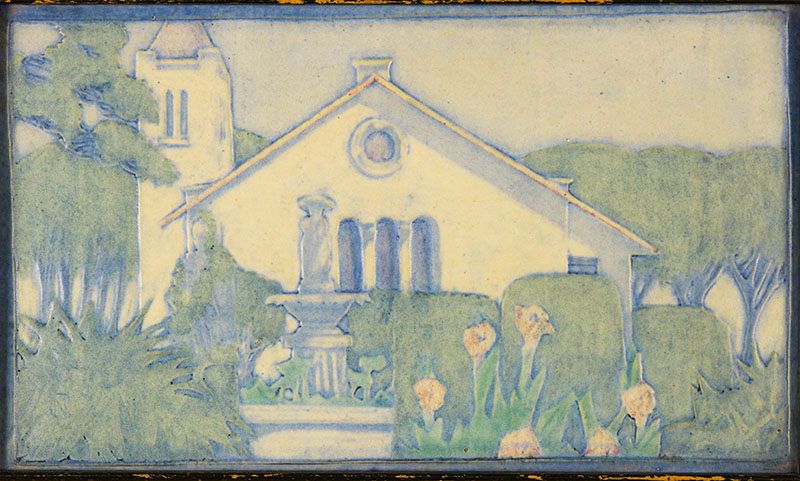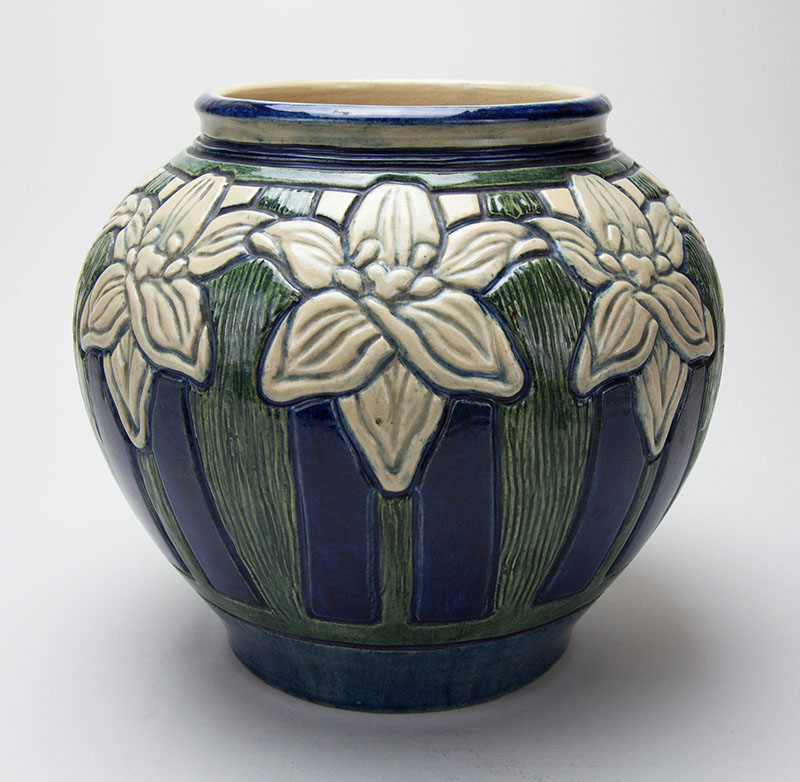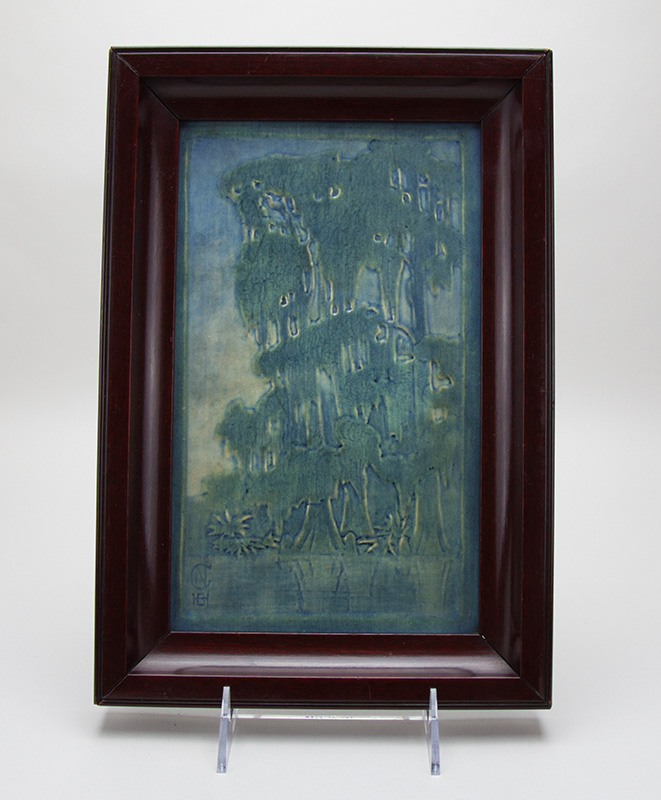Probing the Mystique: A New Look at Newcomb Pottery
Click on images to enlarge them and view captions.
by Elyse D. Gerstenecker
The story of Newcomb College Pottery has been told often. Seeking out a way for alumnae to put their education into practice, the leaders of the art department of H. Sophie Newcomb Memorial College in New Orleans established a pottery. Director Ellsworth Woodward (1861–1939) hired Mary Given Sheerer (1865–1954) to teach china painting courses in 1894, and Sheerer began working toward establishing the Pottery the following year.
Men were hired as potters to throw the vessels, and Newcomb graduates decorated the works with flora and fauna from the American South. The Pottery’s first decade saw varied designs and subjects. Later, after shifting from saturated colors and high-gloss glazes to muted tones and matte glazes, their hazy Southern landscapes became very popular. Eventually, over-reliance on this motif led to designer burnout and decline, and the firm’s tardy response to changes in taste led to its closure in 1939.
As with all things, this story becomes more complicated on closer examination. The exhibition The Moss Mystique: Southern Women and Newcomb Pottery, sponsored in part by a Dean F. Failey Grant from the Decorative Arts Trust, reconsiders the vision of the American South that the Pottery put forward. Drawn exclusively from the collections of the Newcomb Art Museum of Tulane University, the exhibition includes over 80 objects from the Pottery’s 45 years of operations to demonstrate changes in methods, designs, and motifs. The exhibition is organized in sections according to ornamental themes and explores Newcomb’s contribution to a visual regional identity.
Two small sections of the exhibition, “Down in New Orleans” and “At the Mouth of the Mississippi River,” introduce a brief history of the Newcomb Pottery and the enterprise’s earliest design approaches. Despite New Orleans’s rapid growth and distinct culture that many turn-of-the-20th-century Americans found fascinating, decorators used relatively few scenes of the city in their work, centering on the Newcomb College campus instead (figure 1). However, this urbane existence may not have correlated with conceptions of the South as a primarily rural and pre-modern locale. Similarly, when Newcomb’s founders looked to New England art pottery, critics, and consumer audiences to shape their designs, the depictions of maritime subjects may not have seemed sufficiently special.
Another section of the exhibition, “From Her Garden,” explores the cultivated flora that the Newcomb decorators rendered in their work (figure 2). Advertisements and articles about the Pottery frequently discussed their gender, in addition to alluding to their status as upper-class white women. The women’s choice of subjects close to home connoted lives of leisured domesticity in rural settings, associating them with the “Southern belle” trope that emerged in post-Civil War fiction. At the same time, many of these garden flowers have origins or closely related species in Asia, simultaneously fostering visual ties between the South and a region regarded as exotic.
The final two sections, “On the Bayou” and “The Forest Primeval,” delve into Newcomb’s steady evolution from isolated plant motifs to renderings of landscapes. In the Pottery’s early phase, decorators selected plants as individual symbols of swamps and bayous. The 1910s saw the decorators create scenes of wetlands with cypress trees heavily draped in Spanish moss, satisfying demand for depictions of a subject that intrigued many consumers (figure 3). The evolution from early to late Newcomb is most visible in works with forest subjects. During Newcomb’s early years, decorators rendered oaks and other trees on objects’ surfaces like many other plants, as repeating motifs (figure 4). However, because of this repetitious approach, these decorative schemes could be read much like the straightforward landscapes that followed in the 1910s. These changes suggest the decorators’ awareness of the romanticization of their region.
The continual popularity of moss-draped landscapes can be seen today in tourism campaigns for New Orleans and Savannah, just as the Southern belle archetype continues to impact ideas about Southern womanhood. To contemplate these images’ perpetuation in the 21st century, Telfair Museums enlisted the help of Raheleh Filsoofi, Assistant Professor of Ceramics at Vanderbilt University. As an Iranian American artist who travels and works throughout the American South, Filsoofi’s work often considers regional, personal, and gender identity. Co-curated with Erin Dunn, Telfair’s Curator of Modern and Contemporary Art, (Un)Grounded: Raheleh Filsoofi presents new work by the artist inspired by the Newcomb Pottery in an adjacent gallery. It includes ceramics she made following Newcomb’s forms, flipping the firm’s gendered roles; sound from sites where she collected clay; and argillotypes, a new form of clay printing she has developed, of Southern botanical subjects inspired by Newcomb decorators (figure 5). This important new work helps demonstrate the multitudes that this extraordinary and complicated region still holds, and the region’s inability to be adequately packaged into tidy images.
The Moss Mystique: Southern Women and Newcomb Pottery and (Un)Grounded: Raheleh Filsoofis are on view at Telfair Museums through September 7, 2025.
Elyse D. Gerstenecker, PhD, is the Curator of Decorative Arts at Telfair Museums.
A print version of this article was published in The Magazine of the Decorative Arts Trust, one of our most popular member benefits. Join today!





